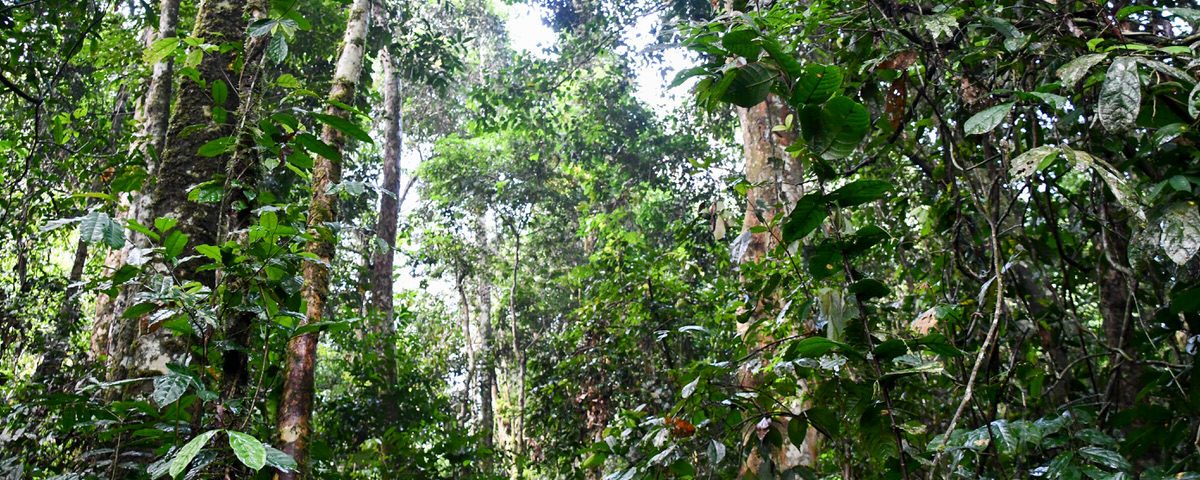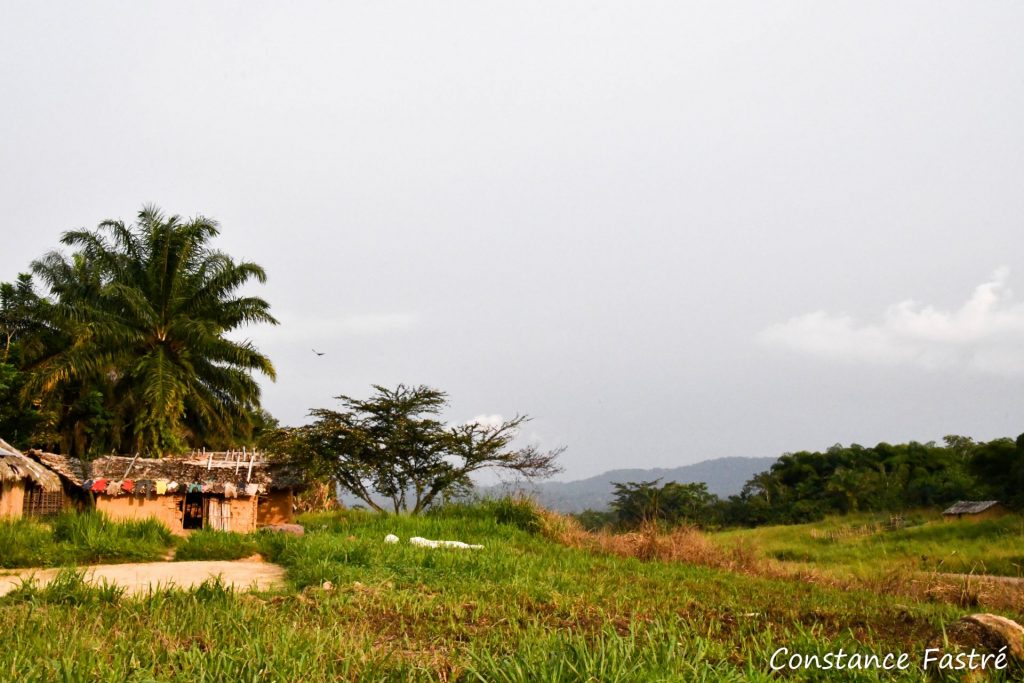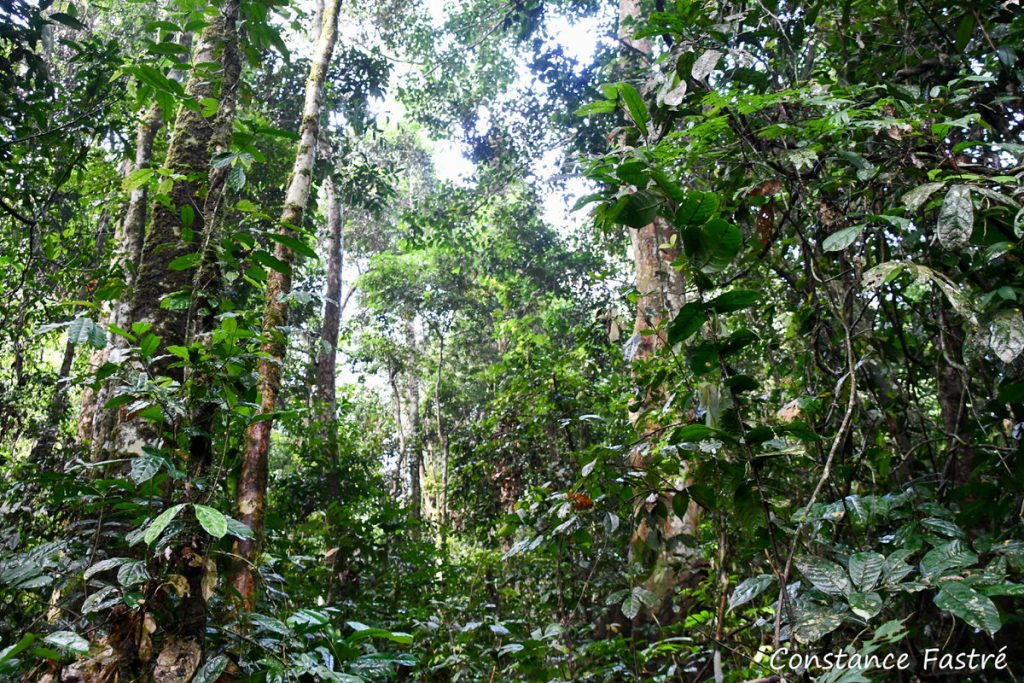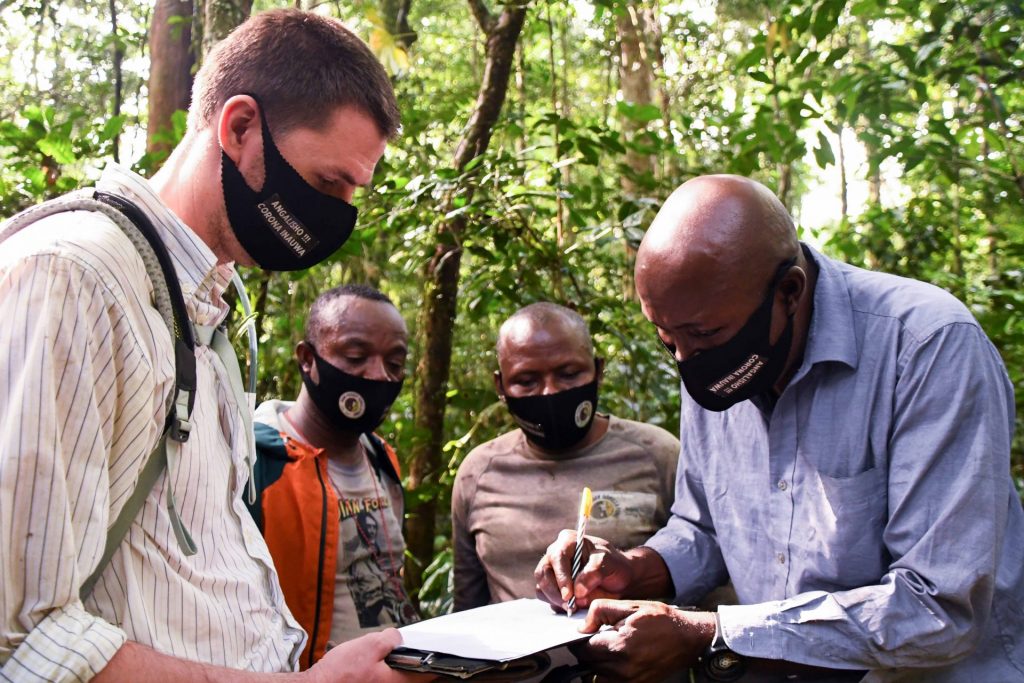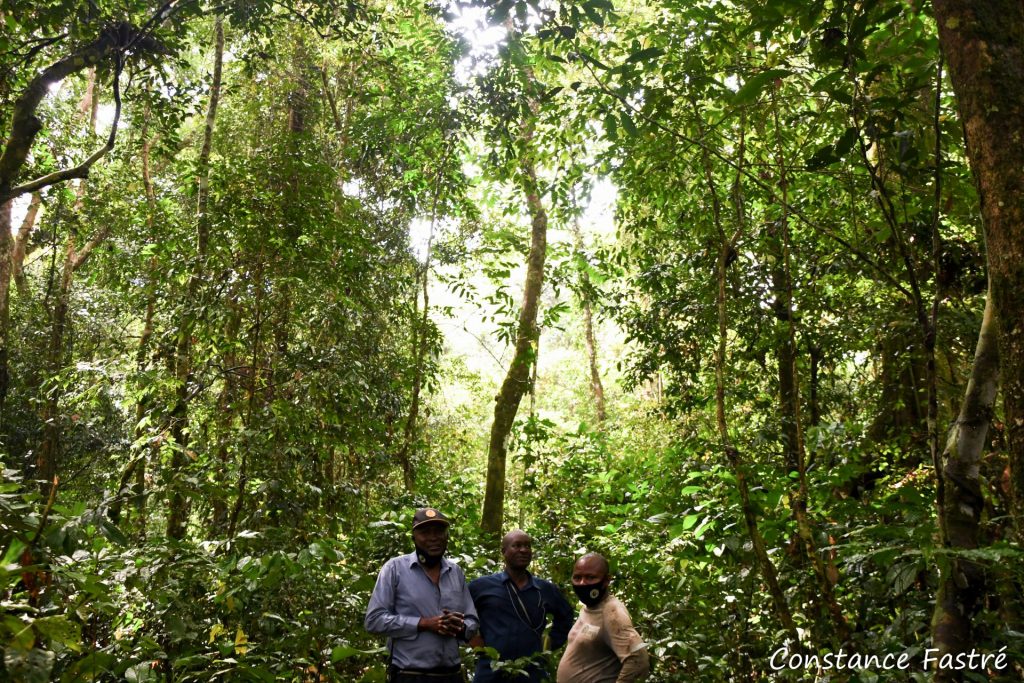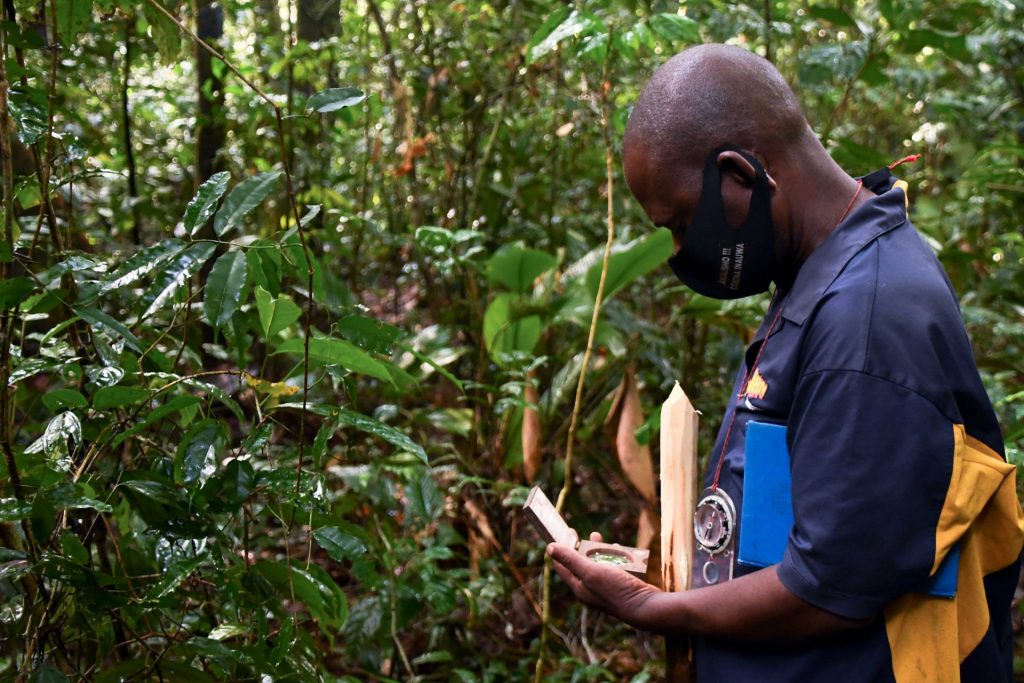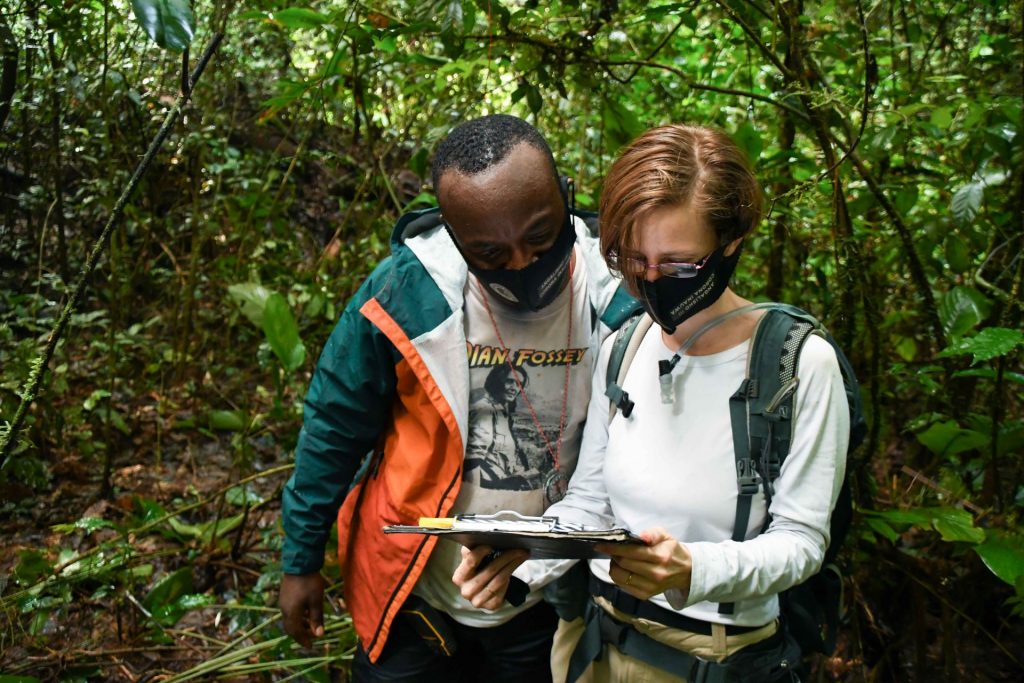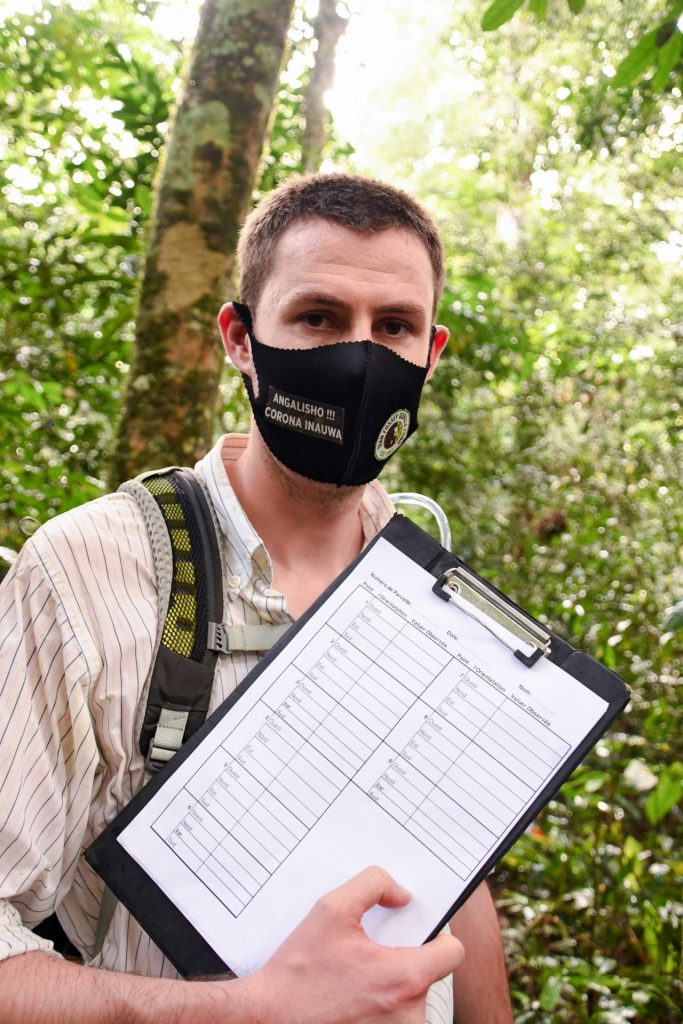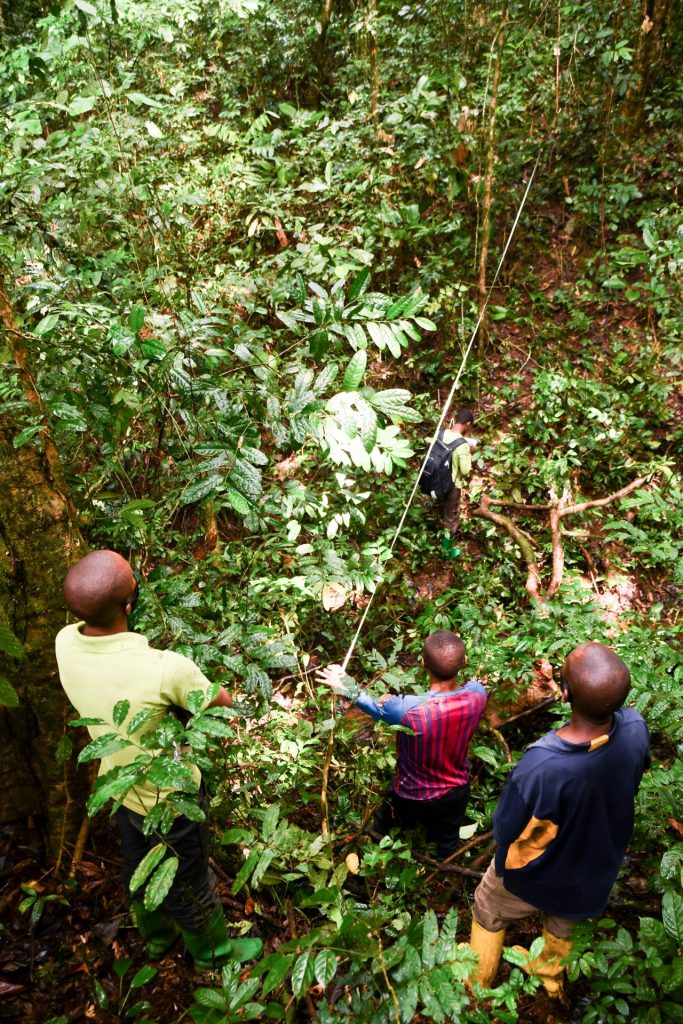Over the past few months, much has been happening in the Nkuba Conservation Area (NCA) in Congo. The Dian Fossey Gorilla Fund (DFGFI) has worked together with the NGO Wildlife Works to collect data on the amount of carbon present in the forests of the NCA. Once analyzed, the data will be used to register the NCA in the REDD+ (Reducing Emissions from Deforestation and forest Degradation) program. The principle of REDD+ is simple: landowners sell the carbon stored in their forests on an international market in exchange for a commitment to prevent deforestation and degradation in their forests. This international program, created by the UN, aims to fight climate change, conserve biodiversity and support local livelihoods in developing countries like DRC.
Left picture : Inside the rainforest of the Nkuba Conservation Area
In Nkuba, this program is a great opportunity to generate funds to support local communities that protect the forest since 2012. Here, the DFGFI Congo team helps by organizing the data collection necessary to estimate how much carbon the forests of the NCA store. Then they will sell the carbon and use the benefits generated to improve the lives of the communities owning the forests.

To help the team, two consultants from the Wildlife Works office of Kinshasa stayed at the Dian Fossey Base in Nkuba for three months. Djems Mbalaka and Panest Ngubidi have worked with the REDD+ program in the community-owned rainforest of Mai Ndombe in Western Congo, home to chimpanzees and bonobos. Thanks to their expertise, they helped the DFGFI team through the REDD+ quantification process: estimate how much carbon is stored in the forest.
Right picture : Djems (WW), Panest (WW) and Pazo (DFGF) in the forest.
Before starting the process, DFGFI met with the local communities of Nkuba. Such meetings are crucial to explain what climate change is, how protecting the forest can help, and what are the principle of the REDD+ program. It is also important to clarify how DFGFI could use the money generated by selling the carbon to improve life in the villages. These meetings were a success as most landowners have already signed up to take part to the program. Soon, each of these communities will elect a Development Committee. Together with DFGFI, the Committee will decide how to distribute the benefits generated by REDD+ to the community.
With the communities on board, the DFGFI team started collecting scientific data. Trees capture carbon dioxide, a greenhouse gas, and store the carbon in their trunks and branches. To estimate how much carbon is stored in the entire forest, we use 150 plots scattered within the forest. In these 60 meter-diameter plots, the field staff counts each tree and records their size. Then, scientists in the US calculate the amount of carbon stored in the plots and extrapolate this amount to the entire surface of the forest. Counting and measuring trees may sound easy, but it must be done in a way that fits precise and complex guidelines. This is why our colleagues from Wildlife Works stayed in Nkuba: to teach the DFGFI staff how to do it. And it worked. In the last two months, the DFGFI staff collected the biometric data of all trees present in 148 out of the 150 plots. Most of this data has already been sent to the US for analysis.
When Frederik and I arrived in Nkuba in December, there was still some work to do. So, we joined an patrol in the forest during which the field staff learned how to measure canopy density. Such measures are important to complete the estimations of carbon amounts of the NCA. It was our first trip in the forest, and we were impressed by the dedication and hard work carried out by the staff! It is a 4-hours walk on small muddy paths in the rainforest, carrying all the equipment, to reach the closest camp. Gathering the data itself, which we did on our second day, is also hard work. It is difficult to walk in a straight line inside dense rainforest, as the data collection protocol demands. Yet, by the end of the day, each staff member had learned how to measure the canopy density, using a special tool called a densiometer. Even better, we gathered the data we needed. On the next day, after a wonderful morning watching grey parrots at a salt lick area located near the camp, we all walked back to the DFGFI base. Upon arrival, we were (very) sweaty and tired. But we were proud to have shared this experience with our new colleagues here in Congo and are excited to know more about the amount of carbon stored in NCA!

